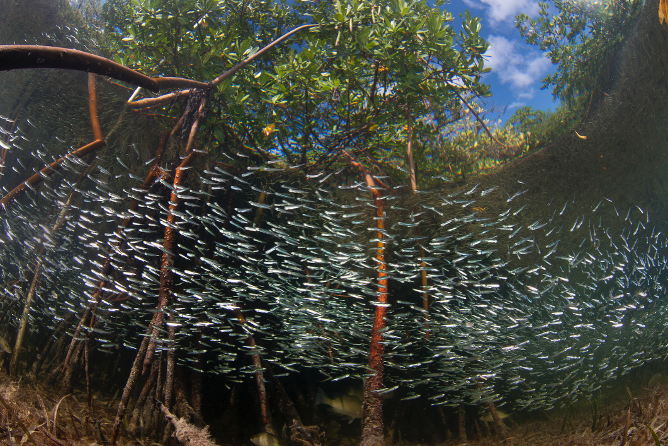Rewiring how the world valves mangroves
How Mangrove Projects Build Opportunity and Resilience for Coastal Communities
The world is waking up to the need to secure the future of this extraordinarily valuable ecosystem. "Mangrove forests are among the most valuable and threatened ecosystems on Earth. We have lost one million hectares of mangroves since 1996-far too much," said Jennifer Morris, Chief Executive Officer of The Nature Conservancy.
Mangroves have been lost globally due to coastal development, aquaculture expansion, logging, and pollution. Although the rate of loss has slowed in the last decade, degradation continues in many regions, placing coastal communities, fisheries, biodiversity, and climate stability at risk.
Mangroves are uniquely powerful coastal ecosystems-they store up to four times more carbon per hectare than terrestrial forests. Globally, Mangroves store the carbon equivalent of over 22 gigatons of CO2. For example, the entire United States emits about 6.7 gigatons of CO2-equivalent per year.
A fringe forest of mangrove, 100 meters wide, can reduce the height of a wave by 66%. During Hurricane lan, mangroves buffer coastlines against storm surge.
Hurricane lan (2022): Mangroves are estimated to have prevented approximately $4 billion in flood damage. In areas of Collier, Lee, and Charlotte Counties, they reduced flood depths by over a meter in some neighborhoods.
How mangrove forests protect the coast
Flood Production Benefits of Mangroves
There's also a more recent study (reported by Earth.com) that mangrove-associated species contribute substantially to food production, and that in some places up to 80% of species targeted by fisheries depend on mangroves in at least part of their life cycle.
They support an estimated 4.1 million small-scale fishers who rely on them for their livelihoods. Additionally, 210 million people live near mangroves and benefit from the fisheries associated with them. Economically, mangroves support the production of around 1.4 trillion commercially important fish, prawns, bivalves, and crabs each year.
The 2022 United Nations Climate Change Conference, the 27th "Conference of the Parties"(COP), over 30 national and subnational governments endorsed Mangrove Breakthrough when it was purposed, including Australia, Brazil, Colombia, Germany, Mexico, the United Kingdom, and the United Arab Emirates. They recognized the urgent challenges that mangrove forests are facing, so the Mangrove Breakthrough was launched. The Global Mangrove Alliance, and the UN High-Level Climate Champions are leading the global effort. Their goal is to secure the protection and restoration of 15 million hectares of mangroves by 2030, supported by US$4 billion in sustainable finance.
Objectives of the Mangrove Breakthrough
Halt mangrove loss by 2030.
Restore degraded mangrove ecosystems using science-based methods.
Mobilize US$4 billion in sustainable finance.
Strengthen community-led stewardship and governance.
Integrate mangroves into national climate commitments and adaptation strategies.
Build global monitoring using standardized science and remote sensing.
Here are some Case Studies of Projects funded by Mangrove Breakthrough




